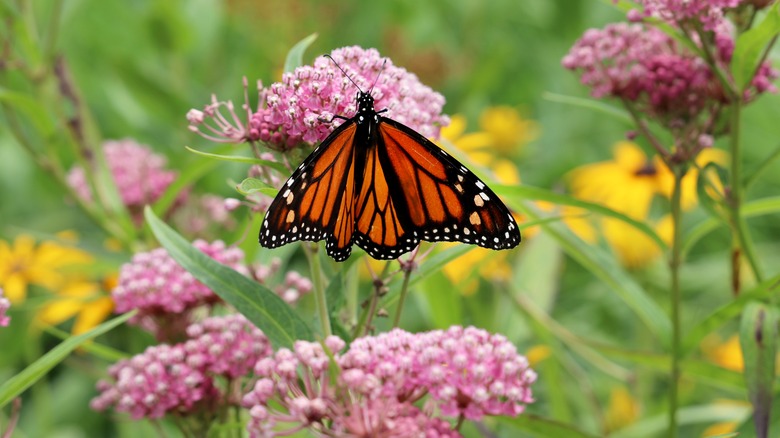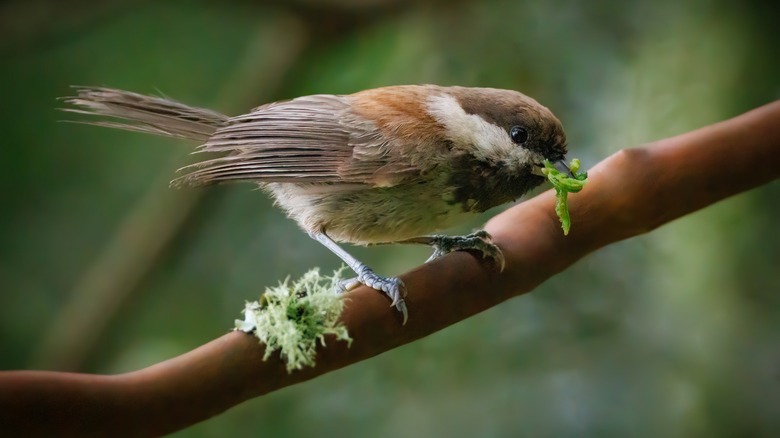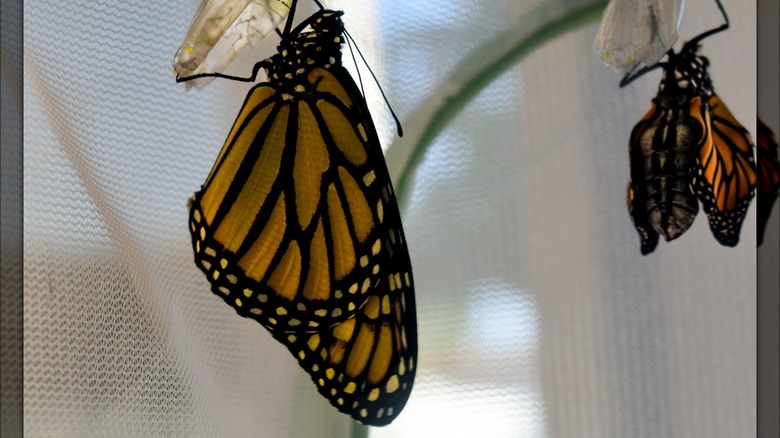Why You Shouldn't Plant Milkweed Near Your Bird Feeders, According To Our Master Gardener
We love seeing a variety of beautiful birds and butterflies in our garden. The problem is Mother Nature is very practical, so there's a food chain. We learned about the circle of life from "The Lion King," but it also exists in our backyard. While we can't entirely control what becomes the meal of another in the great outdoors, we can take steps to help protect the beautiful endangered monarch by keeping milkweed away from bird feeders. There are several benefits of growing a milkweed plant, but we want to keep them away from places where birds congregate.
Many types of birds feast on both seeds and insects, and while most birds steer clear of monarchs in their larval stage, some are not impacted by the toxic compounds they contain. One example is the California towhee, which can clear a milkweed plant of monarch caterpillars in no time. Birds are not the only threat to monarchs, however, since bird feeders also attract other predators that will consume these insects at almost any stage of life.
Birds and other pests
Many types of milkweed exist, and this family of plants is the only place adult monarchs can lay their eggs. However, when they do, they are vulnerable to larger predators. Planting milkweed near your bird feeder, where birds that feed on adult butterflies often congregate, basically leads the predator directly to their prey. Starlings, scrub jays, and chestnut-backed chickadees are all known to consume adult monarch butterflies.
Birds are not the only predators of monarchs attracted to feeders. The ground around bird feeders is also very attractive to mice and other rodents since they often feed on scraps of seeds left behind by birds. If milkweed is planted near a bird feeder, monarch chrysalides will usually be nearby, which provides a tasty, protein-filled snack for hungry mice. Hummingbird feeders should also be kept from milkweed since they tend to attract ants and flies, which can kill monarchs in the egg and larvae stages.
Protecting monarchs
Naturally, the first step to encouraging monarchs to reproduce with as few losses as possible is to keep your milkweed and other butterfly-attracting plants away from your bird feeders. While milkweed is the most important plant for monarchs, other gorgeous blooms like zinnias are attractive to a wide range of butterflies and bees. It's also best to keep these away from your bird feeders so that they don't meet the same fate. As for the area around your bird feeders, mulch and non-blooming plants like ornamental grasses are a better choice to keep your favorite insects safe.
For those serious about helping monarchs reach adulthood, you can use milkweed to attract the butterflies to lay their eggs on your plants. Once those eggs hatch, bring the larvae into a safe enclosure indoors to ensure that they are protected from housepets, extreme heat, and cold. You'll need a steady supply of milkweed for them to feed on until they make their chrysalis, and those leaves should never be treated with any kind of chemical pesticide. Once your monarchs emerge as butterflies, release them into the wild to continue growing the population.



